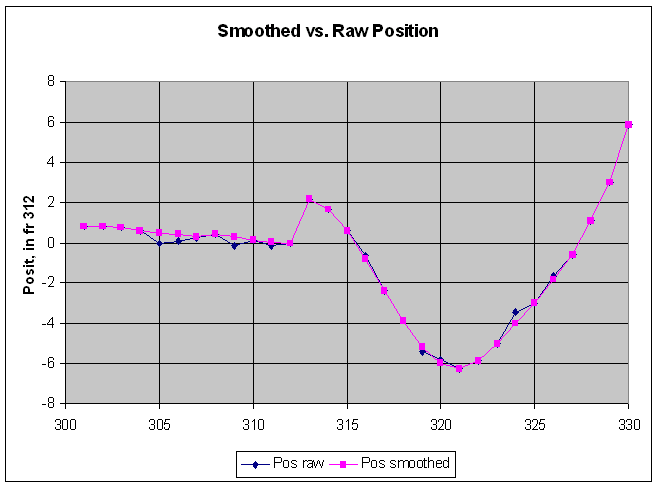
2. The Zapruder film: movements to be explained
With this theoretical background, let us now review the motions of the
President’s head as recorded in the Zapruder film and interpret them
qualitatively and quantitatively. The best measure of these motions was provided
by Josiah Thompson nearly thirty years ago (pp.
272–276).
He and physics graduate student William Hoffman carefully measured the positions
of the back of Kennedy’s head relative to two fixed points in the limousine,
achieving a precision which has not been duplicated since, to the best of my
knowledge. His basic approach was “to take two fixed points a known distance
apart on the car and measure the distance between them and the President’s
head through a series of frame numbers” (p. 89).
Thompson did this several times before he was able to reduce the measurement
errors to satisfactory values. First he used the blurry reproductions in Volume
XVIII of the Warren Report. Then he did the same at the National Archives, by
projecting slides of the frames onto large sheets of white drawing paper.
Finally he was able to use 8x10-inch enlargements of Frames 301–330 in the
offices of Life Magazine.
Each 8x10 enlargement was measured three
times, according to the following procedure:
First the length of the reference unit, the distance between the most forward point on the left-rear handhold and the upper edge of the back seat directly in front of it (the line AB), was measured. Then the distance between the back of the President’s head and each of the same two fixed points on the car was determined (lines AC and BC respectively). Two measurements of the head position were made in order to procure an independent, internal verification of the data. The same two fixed points were used in order to minimize the error inherent in attempting to fix a location.
To make the measurements as precise as possible, the endpoints of each line were first marked with pinholes. This procedure is necessary as all perception of detail is lost in the blur of the emulsion when photographs are viewed under a microscope. A strip of Codex millimeter graph paper was then attached to the photograph so that one edge connected the two pinholes. At this point the entire photograph was placed on the stage of a Bausch and Lomb dissecting microscope. A scale, also manufactured by Bausch and Lomb, with divisions at every tenth of a millimeter was then aligned with the graph paper over one of the pinholes, and with the microscope adjusted for maximum magnification (x45), the hole was located to within 25 microns (1 meter is equivalent to 1 million microns). The scale was then aligned with the graph paper at the other pinhole to complete the measurement. This same technique was used to determine the length of the three distances on each of the twenty-nine frames. (William Hoffman, in Six Seconds in Dallas, pp. 273–274)
These measurements were then scaled to get actual positions of the back
of the President’s head. An IBM 1620 computer was used for the calculations,
presumably an advanced technique for those days.
Now that the Zapruder film is available to
everyone with a VCR or laserdisc player, first by way of Oliver Stone’s movie JFK
and later on CD-ROM, any interested person can check the essential features of Thompson’s
measurements. But the poor resolution of TV images makes this approach much less
precise than Thompson’s measurements. I measured distances from a laserdisc
copy of the film on a 46-inch projection TV, and found the results to be
extremely useful. It was clear, though, that Thompson’s measurements were much
better than mine. Because his measurements are widely accepted within the
assassination community, I will use them exclusively for the rest of this
discussion.
We first consider the basic motions of
Kennedy’s head, then relate them to the passage of the bullet and the
explosion of the head. Thompson's data, both raw and as smoothed by me, are
given in Table 1 below. (For a detailed discussion of the smoothing procedure, click
here.) All data are rounded to the hundredths place. It is an easy matter to calculate
speeds and accelerations
of the head or the body (forward and rearward motion, respectively). The average
velocity between two frames is just the difference in position divided by the
difference in time (1/18.3 s). The average acceleration between two frames is
the difference in velocity divided by the difference in time.
[Acceleration
is the rate of change of velocity with time. Accelerations of objects are
important because they are directly related to the forces applied to them,
by the formula f = ma, where f is a force, m is the mass of an object, and
a is its acceleration. In the English system, used throughout this paper,
acceleration has units of length per time per time, or ft per sec per sec,
often written as ft/sec2 or ft s-2.]
| Raw | Smoothed | |||||
| Z-frame no. | Pos. wrt 312, in, w. 318 interp. | Avg. vel, ft s-1 | Avg. acc., ft s-2 | Pos. wrt 312, in, w. 318 interp. | Avg. vel., ft s-1 | Avg. acc., ft s-2 |
| 301 | 0.79 | 0.79 | ||||
| 302 | 0.81 | 0.03 | 0.81 | 0.03 | ||
| 303 | 0.74 | -0.10 | -2.29 | 0.74 | -0.10 | -2.29 |
| 304 | 0.59 | -0.24 | -2.68 | 0.59 | -0.24 | -2.68 |
| 305 | -0.03 | -0.94 | -12.70 | 0.50 | -0.13 | 2.04 |
| 306 | 0.07 | 0.15 | 19.84 | 0.40 | -0.15 | -0.39 |
| 307 | 0.27 | 0.31 | 3.01 | 0.30 | -0.15 | -0.00 |
| 308 | 0.44 | 0.26 | -0.98 | 0.44 | 0.22 | 6.81 |
| 309 | -0.12 | -0.87 | -20.62 | 0.30 | -0.22 | -8.04 |
| 310 | 0.13 | 0.40 | 23.14 | 0.14 | -0.25 | -0.59 |
| 311 | -0.16 | -0.45 | -15.49 | 0.05 | -0.13 | 2.23 |
| 312 | 0 | 0.24 | 12.70 | 0 | -0.08 | 0.98 |
| 313 | 2.18 | 3.33 | 56.40 | 2.18 | 3.33 | 62.26 |
| 314 | 1.64 | -0.82 | -75.88 | 1.64 | -0.82 | -75.88 |
| 315 | 0.57 | -1.64 | -14.93 | 0.57 | -1.64 | -14.93 |
| 316 | -0.66 | -1.87 | -4.24 | -0.80 | -2.09 | -8.29 |
| 317 | -2.36 | -2.60 | -13.37 | -2.36 | -2.38 | -5.27 |
| 318 | -3.89 | -2.33 | 4.93 | -3.90 | -2.35 | 0.50 |
| 319 | -5.41 | -2.33 | 0.00 | -5.20 | -1.98 | 6.73 |
| 320 | -5.80 | -0.59 | 31.91 | -6.00 | -1.22 | 13.95 |
| 321 | -6.27 | -0.72 | -2.37 | -6.27 | -0.41 | 14.87 |
| 322 | -5.88 | 0.59 | 23.94 | -5.88 | 0.59 | 18.31 |
| 323 | -5.02 | 1.31 | 13.09 | -5.02 | 1.31 | 13.09 |
| 324 | -3.46 | 2.38 | 19.52 | -4.00 | 1.56 | 4.52 |
| 325 | -3.02 | 0.68 | -31.09 | -3.02 | 1.50 | -1.09 |
| 326 | -1.66 | 2.08 | 25.66 | -1.80 | 1.86 | 6.64 |
| 327 | -0.60 | 1.62 | -8.43 | -0.60 | 1.84 | -0.39 |
| 328 | 1.09 | 2.56 | 17.30 | 1.09 | 2.56 | 13.28 |
| 329 | 3.00 | 2.92 | 6.45 | 3.00 | 2.92 | 6.45 |
| 330 | 5.85 | 4.35 | 26.21 | 5.85 | 4.35 | 26.20 |
It is hard to envision the reason for the smoothing or its effect from the table above. To help understand the smoothing, which was minimal, the raw and smoothed data are shown in Figures 1–3 below. Note the progressively greater effects of the smoothing on position, velocity, and acceleration.

Figure 1. Raw vs. smoothed position.
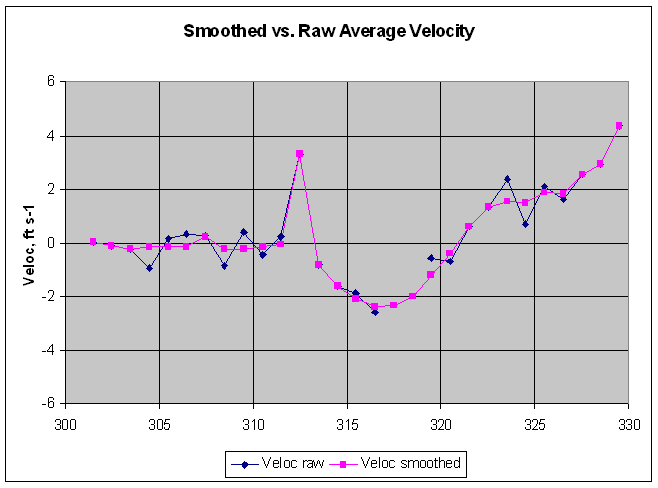
Figure 2. Raw vs. smoothed velocity.
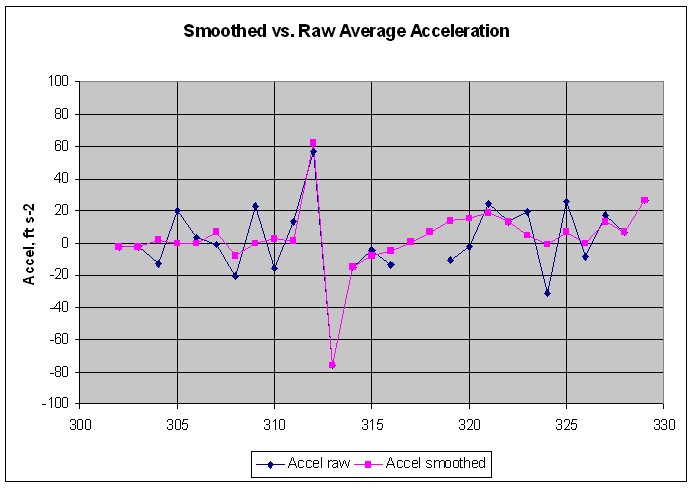
Figure 3. Raw vs. smoothed acceleration.
The position, velocity, and acceleration of Kennedy’s head as determined from the smoothed data are plotted below in Figures 4 and 5. Positions are relative to Frame 312, which is arbitrarily set to 0.0 inches.
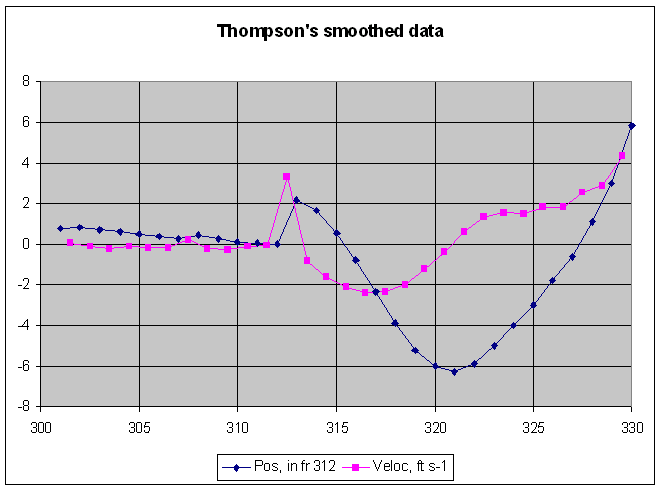
Figure 4. Position and velocity of the head as derived from smoothed Thompson's data
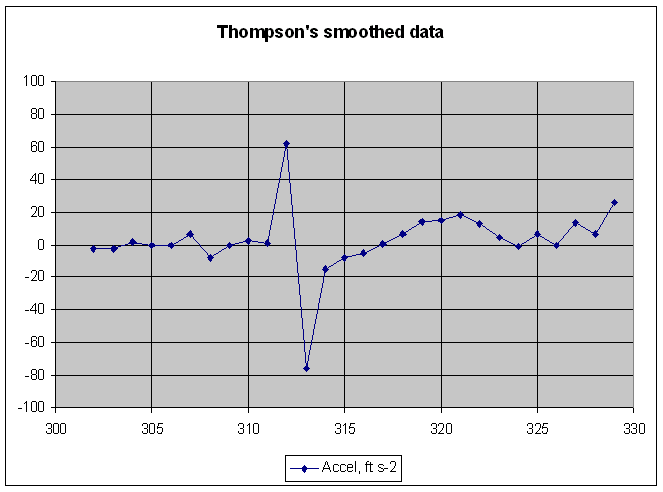
Figure 5. Acceleration of the head/body as derived from smoothed Thompson's data
The results show several obvious features. In
frames 301–312,
Kennedy’s head is drifting slowly backward (by about one inch in total). Between 312 and 313, his head snaps suddenly forward by about 2.2 inches, which
corresponds to an average velocity of 3.3 feet per second over the frame. In
fact, this figure is a minimum velocity, because the head may not have been
moving during the entire frame—it may not have started to snap forward as soon
as 312 closed, and it may have begun to lurch backward before 313 closed. In
fact, the obvious explosion in 313, with the two large fragments having traveled
several feet away from the head, proves that the head was already moving backward
before the end of 313. Both the probable delay after 312 and the certain
explosion before the end of 313 shorten the time available for the snap and
increase its average velocity beyond the 3.3 ft s-1 calculated from
the full frame. They also mean that the final velocity of the snap, which is
what the simulations calculate, may have been considerably greater than 3.3 ft s-1.
The quick forward snap lasts for only one
frame (about 1/18 second, or 55 milliseconds). By 314, Kennedy’s head is
already moving backward again. It continues backward for seven more frames
(through 321),
during the first four of which (through 318) it continues to accelerate
rearward, although at a greatly reduced rate. From 314 through 318, its rearward
speed increases gradually from 0.8 ft s-1 to 2.8 ft s-1.
Beginning at 319, this rearward velocity slows (indicating a forward force), and
by 322 the body has reversed direction and is now moving forward. The forward
movement continues through frame 330. This forward force and change of direction
correspond to his bouncing off the rear seat and falling forward, ultimately
into Mrs. Kennedy's lap.
To recap the motions represented here: The head
first snaps quickly forward in 313, then equally abruptly reverses its motion by
314. Through 318 it accelerates rearward but less rapidly, and beginning in 319
accelerates forward, eventually reversing its motion in 322. The head thus
experiences two violent forces
within 55 milliseconds, the first forward and the second rearward, then a
longer, weaker rearward force, and then a strong forward push from the seat.
That makes four forces within half a second, the first two violent and the last
two weaker.
But there is one last force, a stronger positive one that can
be seen in the increasing forward speed of frames 328–330. That makes five
forces in one second, two violent ones followed by three weaker ones.
We can get some quick ideas about the nature of these
forces. First consider which could be from bullets and which not. The first two,
the quick and violent forces, are obvious candidates for coming from bullets.
The last three, the weaker forces, cannot be directly from bullets because they
are too prolonged. The last forces are the easiest to identify. The fourth force, a
forward force from 319 through 324, corresponds with the body's bouncing off
the rear seat. That force is obviously from the seat. The last
force, a slightly stronger forward one from 328 through 330, is probably just
gravity pulling the leaning president into his wife's lap. These are the easy
forces.
The third force, a rearward force from 315 through 318, is
the first of the weak ones. Even though weak, it increased the president's
rearward speed from 0.8 ft s-1 to 2.8 ft s-1. In so doing,
it created the striking rearward lurch that so many viewers of the Zapruder film
have interpreted to be the result of a shooter from the front and therefore the
prime evidence for conspiracy. But it cannot have been the direct impulse of a bullet
because it starts too late and lasts too long—a bullet exerts an instantaneous
impulse only, which will be restricted to a single frame of the film.
So the prolonged phase of the lurch must have come from something other than a
bullet. It's not gravity, because it starts with JFK upright and pulls him
to the rear. It's not an acceleration of the car, as some have proposed, because
the other passengers do not show it. About the only thing that remains is a
neuromuscular reaction.
That leaves only the first two forces to be explained, the
violent ones. They are the quick forward snap of the head, followed immediately
by the initial rearward motion of the head and body (actually back and to the
left). It is initially tempting to attribute each motion to a
separate bullet—the first from the rear and the second from the right front
(hereafter abbreviated "front"). Josiah Thompson does this in his
celebrated Six Seconds in Dallas. But this impression starts to weaken as
soon as we look further into the question. The first problem is that the second motion involves much
more mass than the first. The movement between 312 and 313 is just a quick snap of the head—everything below
that remains
still. From 314–320, however, the head, neck, and entire upper torso
move together in a giant backward rotation. Roughly ten times more mass is
moving in the second motion than in the first (85 lb vs. 8 lb), and that requires
the same increase in force. If one bullet caused the first motion, ten would
be required for the second. To refer to this second
motion—the “lurch”—as simply a “head snap,” as David Lifton does, is
wrong. It is a body lurch, not a head snap.
The second, and deeper, problem with attributing the second
motion to a second bullet is that this kind of second motion is exactly what is expected when a
bullet explodes a head, and may even be required by it. Thus there may be no room to
attribute it to a second bullet. A strict sequence
of events is initiated when a high-speed bullet
traverses a head (as discussed in detail in "Wound ballistics and
physics"): (1) the bullet briefly transfers momentum to the head while
passing through it; (2) within 5–10 milliseconds the head explodes; (3)
fragments ejected from the head briefly exert a recoil force on the head,
probably impelling it in a different direction; and (4) no subsequent forces act on the head, so it continues moving with a
constant velocity. If the head explodes primarily to the front, the forward
momentum given to that mass will have to be compensated by a rearward momentum
given to the head and body, which means rearward motion. JFK's head
exploded in that way—the brain matter was hurled primarily in the forward
direction. Thus we expect two oppositely directed motions from the same bullet—a
forward snap corresponding to the initial transfer of momentum as the bullet
bores through the head, followed by an explosive rearward recoil in response to
the cloud of cranial matter thrown forward. That is exactly the sequence of
events seen. It must therefore become the default explanation, leaving at least
temporarily no room for a second bullet.
The great problem, of course, is whether these motions work
out quantitatively. Four quantitative questions are involved. First, can we show
that the speed of the forward snap is consistent with a WCC/MC bullet striking
from the rear? If so, can we secondly show that the speed of the initial
rearward lurch—the so-called "jet effect"—is consistent with the
mechanical recoil? If so, can we thirdly show that a lurch of this magnitude is
required here? And fourth, if we have gotten this far, can we show that a bullet
from the right front cannot have created the initial phase of the rearward
lurch? If we can include the rear bullet and exclude the front bullet, we will
have locked in the answer, and it will be "Case Closed" on this most
important evidence for conspiracy. The rest of this monograph addresses these
four quantitative questions. All the answers turn out positive, and
jointly mean that the lurch can no longer be considered any kind of evidence for
conspiracy. This weakens the case for conspiracy in the JFK assassination beyond
repair.
It is certainly not obvious that a single
bullet can create two oppositely directed motions, or that it can slam an entire
body in the opposite direction from which it hit. The quotes at the beginning of
this article testify to people’s natural reluctance to accept such an
implausible scenario. For a long time, I didn’t believe it,
either. I just couldn’t accept that there was enough energy in that bullet to
move an entire upper body, especially after moving the head in the opposite
direction. This monograph shows that I was wrong. We begin with the head snap (the
easier case), then proceed to the lurch (much more difficult), and finally to
the question of a second bullet.
We close this section by noting an extremely
revealing incident and its ultimate explanation. Josiah Thompson cites measured
accelerations of the President’s head of 69.6 feet per second per second
between Frames 312–313 and -100.3 feet per second per second between Frames
313–314 (p. 90).
One or both of these values were subsequently cited in later books by other
authors, but frequently either as velocities or with the units of velocity (feet
per second) attached. How could this be? Were these authors and their editors
totally unaware of the difference between velocity and acceleration? Couldn’t
they even copy correctly from Six Seconds in Dallas?
I found the answer in Appendix B of Six
Seconds (the discussion of measuring positions of the head which was written
by William Hoffman). Either he or an editor made a simple grammatical error
which evidently caused a sentence to be misread by other writers. In discussing
how he calculated the backward acceleration from the second impulse to the head,
he wrote:
Using a value for the final velocity averaged over frames 313 to 319, the average backward acceleration is found to be -94.7 ft./sec.2 for one-dimensional motion, and -100.3 ft./sec.2 for a final velocity, which is at an angle of 45 degrees to the longitudinal axis of the car. (p. 276)
The problem here is very simple. No comma should have been placed after “final velocity,” because it changes the meaning from the intended “final velocity which is at an angle of 45 degrees to the longitudinal axis of the car” to the erroneous “final velocity” with an implied value of -100.3 ft/sec2, because that’s the number closest to “final velocity.” No wonder the post-Six Seconds literature confused velocity and acceleration. Subsequent writers would have to be really confident in their knowledge of physics to realize the error in this sentence.
Ahead to 3--Physics of Colliding Bodies
Back to 1--Introduction
Back to Physics of the Head Shot